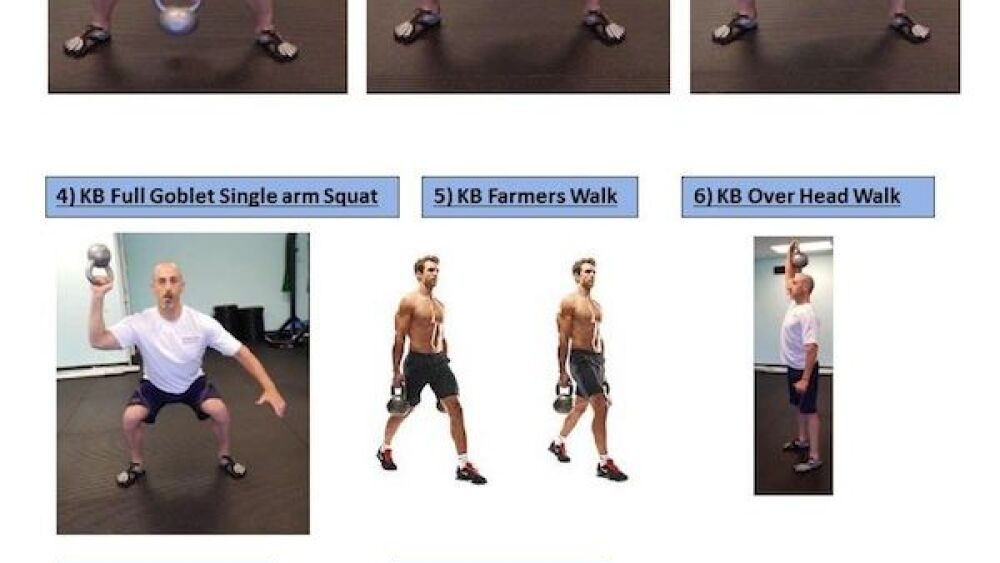I recently taught a fireground fitness class for a small city fire department. This department has three stations and all the firefighters are full-time career.
Although this is a small department, they received a grant for equipment and had built a good gym. But that’s where it stopped; this department has a mandatory workout time of 60 minutes every shift.
Upon questioning their physical fitness trainers and fitness fanatics, what we found was fairly common. The answer went something like this.
“Well, there is about 20 percent that exercise all the time, 30 percent or so that exercise some of the time and well … the rest just sit on the bench and watch the rest of us work out. Sure sometimes they ‘stroll’ on the treadmill but that’s it, just enough to say they worked out.”
My question back: “Are you choosing exercises that are job-specific, but that everyone can benefit from?”
“We all kind of do our own thing. Some put on SCBA and flip tires and swing sledgehammers while others do curls and bench presses. We make them work out, but we do not tell them what they have to do.”
Working out or training
What’s happening here, and in most of the departments we work with, is that the crews are working out when they should be training.
Working out has no goal in mind. It does not take into account factors like time of year, weather or when yearly firefighter fitness tests are done. A workout has no long-term focus; it’s short-sighted and often creates many underlying biomechanical issues that have been proven to cause injury.
For example, most workouts tend to focus on “gym science.” Monday is chest and tris; Tuesday is back and bis; Wednesday is legs, which most skip and then go back Friday to do chest and arms again. Sound familiar?
A scientifically designed training program specific to firefighters will look like this three-step program.
Week 1 to 3: Foam rolling and active stretching, stabilization training, core conditioning and moderate cardio.
Week 4 to 6: Foam roll and active stretch, 2-to-1 pull/push ratio strength training to begin correcting agonist-antagonist imbalances in the body, advanced core conditioning and moderate cardio.
Week 7 to 9: Foam roll, active stretch, basic power development and high-intensity interval training.
This example shows that timing, phases and exercise order are very important. Physiologically, it makes no sense to train to sheer exhaustion on your long week; that fatigue goes with you the rest of the shift.
Train hard on your short week. Focus on power, mobility and stabilization exercises during your long week. What the research has clearly shown is that it’s volume, not load, that causes most of the on-duty fitness injuries. Not picking on Crossfit, but their exercises are almost all high-volume and low-load — sets to failure.
International Association of Fire Fighters’ data has shown that 33 percent of all injuries occur from training to not get hurt; too much volume (intensity) causes these injuries. What we are seeing now is that heavier weight (load) is safer when on duty during the long week as high-load, low-rep exercises cause less fatigue, which equates to a lower on-duty risk of injury.
Try these three exercise sequences when on duty to get fit, include all personnel and, maybe, even have fun.
1. Kettlebell progressions
I love kettlebells for the fire service. Hands down, it is one of the best tools a firefighter can use to get fit and build freaky job-specific fitness.
There are hundreds of kettlebell exercises, but this progression has served my departments well. It builds strength, power, core strength and stability. Plus, the first four exercises are self-diagnostic; if you cannot do them properly (heels pop up, you rotate or lean or have pain) go back to your corrective steps: roll and stretch.
Do two sets of 12 to 15 for the first four exercises. Do two to three laps for the remaining exercises.
2. Suspension trainer progressions
There is no fitness tool available that provides as much bang for the buck as a suspension trainer. Plus, it needs very little space, and it can even be attached to the back of your truck. It also works well with all levels of fitness while always building stability, balance, strength and power.
Doing three sets to failure works well with this progression. You can do a straight three weeks of nothing but suspension training and you will have wild success, especially for those firefighters who have let their fitness go.
I strongly recommend watching all the how-to videos, or, even better, get certified as a TRX coach. There is lot to know about this tool.
3. Primal patterns
Part of your job involves crawling, actually, a lot of your job does. Crawling patterns are how we learned to move as children; as adults we often forget how to do these basic, yet vital patterns.
Doing bear crawls forward and back, crab walks, balance beam, ladder crawls (on the ground) are all excellent exercises that build primal fitness, core strength, stability and are truly job-specific. After you master the basic patterns and can keep your hips down, strap on your gear or weighted vest.
The bottom line is to move well and move often. Movement matters, but keep the movements (exercises) job-specific and safe. If you are unable to do an exercise properly or your form is off, the exercise cannot fix that.
Get on the foam roller, use a tennis ball for self-massage, stretch, and by all means, stay hydrated. Most of your workout should be spent getting ready to train; it’s an investment in your career.
This article, originally published in 2014, has been updated.















